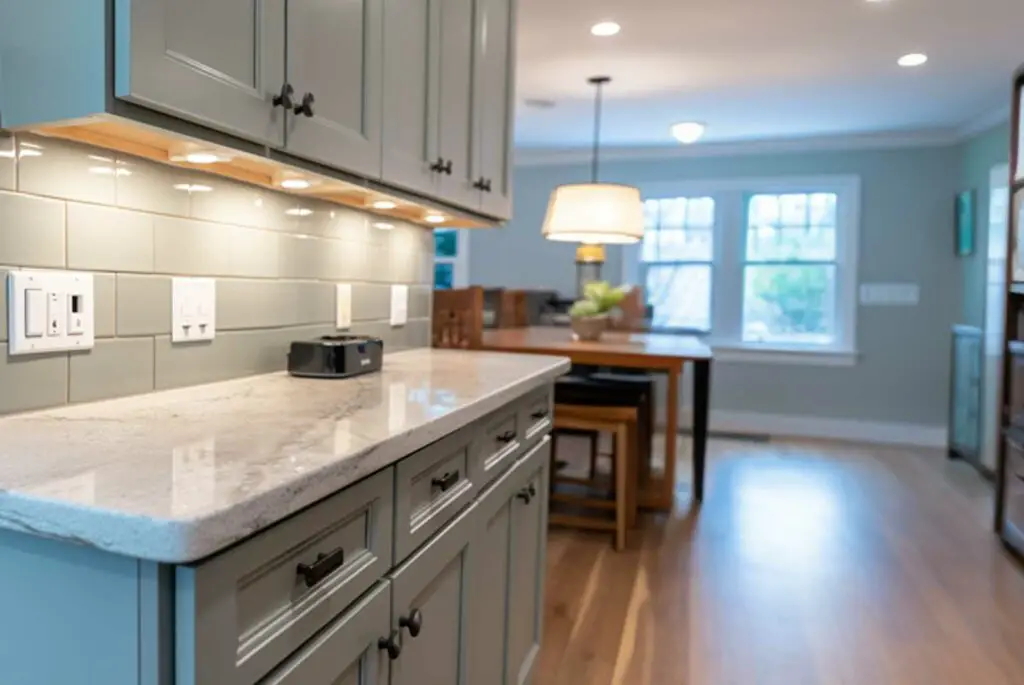GFCI outlets play a vital role in keeping you safe from electrical shock. But have you ever questioned how many outlets a single GFCI can protect? Well, you’re not alone, and you’re in the right place to get the answers you need.
So how many outlets can they actually protect?
A single GFCI outlet can protect multiple downstream outlets on the same circuit. The exact number of outlets a GFCI can protect is not strictly limited by the GFCI itself, but rather by the circuit’s overall capacity and local electrical codes. Typically, residential circuits in the U.S. can have up to 10 to 12 general-purpose outlets. However, when installing multiple outlets downstream of a GFCI, it’s essential to connect them to the “LOAD” terminals of the GFCI outlet to ensure they are protected.
Ground Fault Circuit Interrupter outlets are specifically designed to protect people (that includes you) from electrical shock hazards. GFCIs have been a game-changer, particularly in construction sites. Since the 1970s, OSHA has mandated the use of GFCIs for 120-volt, single-phase, 15- and 20-ampere temporary receptacle outlets on construction sites to protect employees from electrical shock.
We’re about to explore just how many outlets a GFCI can protect. But first, let’s dive into understanding the function and design of GFCIs, which might help you grasp their protective capacity even further.
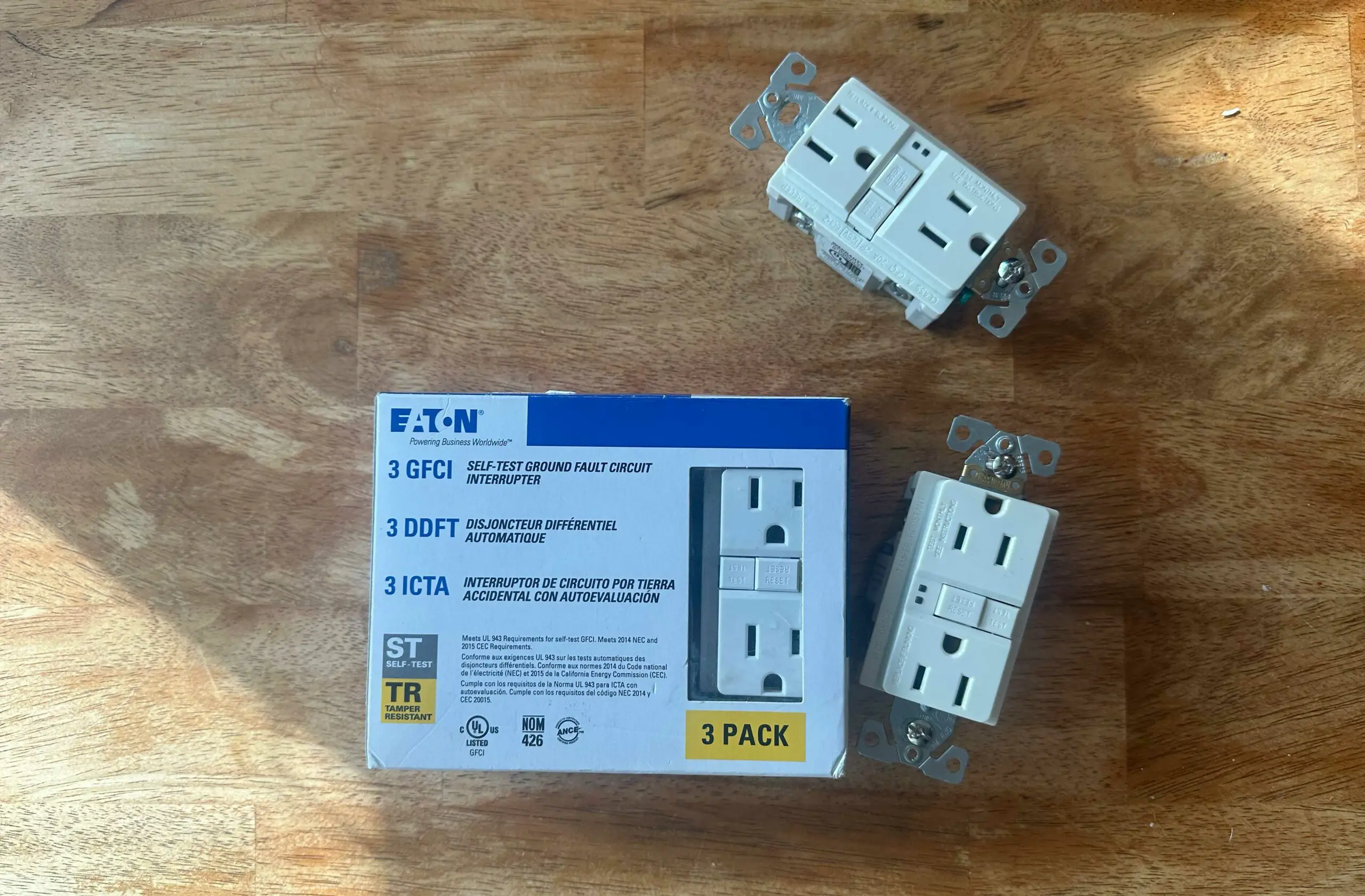
Understanding GFCI
Ever wondered how you can avoid accidents caused by electrical faults? (You’re in the right place.) In this section, we’ll introduce you to Ground Fault Circuit Interrupters (GFCI) – those lifesaving little devices. Let’s dive in and explore their magic.
A GFCI, also known as a ground fault, is a device designed to protect you from electrocution by automatically shutting off power when it detects an imbalance in electrical current. The GFCI outlet is fitted with a test and reset button, which you can use to check its functionality and restore power.
Now you might ask, how many outlets can a GFCI protect? Here’s the deal: a single GFCI can protect multiple outlets connected downstream from it. This means you don’t need a GFCI for each outlet if they’re all part of the same circuit connected to a GFCI. However, it’s essential to ensure that the installation follows proper wiring guidelines, as improper setups can compromise safety.
While GFCI outlets are excellent for preventing electrocution, they’re not foolproof. It’s crucial to test them periodically, especially in areas with high moisture, like bathrooms and kitchens. To test your outlet, simply press the test button – if it’s functioning correctly, the power will shut off, and you can restore it by pressing the reset button.
In my experience, having a GFCI outlet installed by a professional electrician is the best way to ensure safety and proper functioning. Remember, your life could depend on it, so it’s better to be safe than sorry when it comes to electricity.
Keep in mind that GFCI outlets are just one of many safety precautions you should take to protect yourself and your loved ones from electrical hazards. Stay vigilant about electrical safety, and don’t hesitate to call a professional if you ever have doubts or concerns.
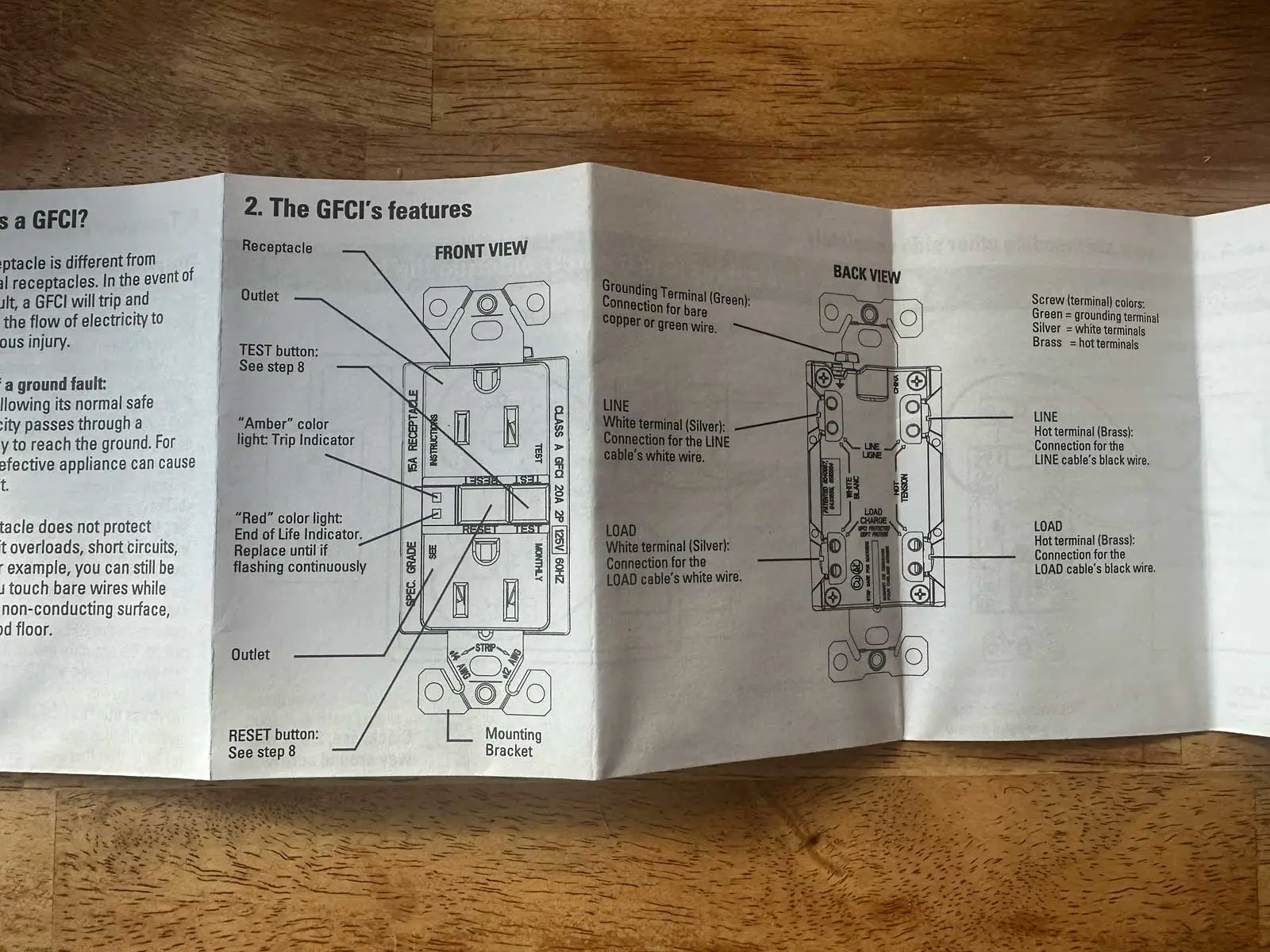
How GFCI Protects Outlets
You might be wondering how a tiny device like a GFCI outlet can provide protection to multiple electrical outlets. Well, you’re in luck, because not only will we cover that, but we’ll also dive into how it protects you from electrical shocks and enhances electrical safety. So, let’s plug in and explore the world of GFCI protection!
GFCI outlets, or Ground Fault Circuit Interrupter outlets, are lifesaving devices designed to protect you from electrical shocks and electrocution. These smart devices monitor the flow of electricity in an electrical circuit and detect any imbalance, whether it be from unwanted contact with a live wire or a ground fault (like current leakage). When a GFCI outlet notices something’s off, it interrupts the power flow, effectively shutting off the flow of electricity and keeping you safe.
Now, here’s the exciting part: a single GFCI outlet can protect multiple outlets. How is that possible, you ask? It’s quite simple, actually. When you wire additional outlets that share the same electrical line as the GFCI outlet, they become part of the same load. This means that when the GFCI outlet detects an imbalance or ground fault, it will automatically cut off power to the whole line, which includes all the connected outlets.
To make this magic happen, you need to ensure that the connected outlets are wired to the “load” side of the GFCI outlet. This ensures that they’re part of the same connected line, and thus, share the same protection provided by the GFCI.
In my experience, having multiple outlets protected by a single GFCI outlet not only adds an extra layer of safety but also saves time in case of power interruptions. All you have to do is press the “Reset” button on your GFCI outlet, and voilà – all your connected outlets are back in action!
GFCI outlets truly make a difference when it comes to electrical safety, especially in areas prone to water contact, such as kitchens and bathrooms. Connecting multiple outlets to a single GFCI device is not only cost-effective but ensures a safe and shock-free environment for you and your loved ones.
Remember, though, that while GFCI outlets are essential for safety, they’re not foolproof. Regular testing is necessary to ensure they’re working correctly. So, don’t forget to press that “Test” button every now and then. After all, it’s better to be safe than sorry!
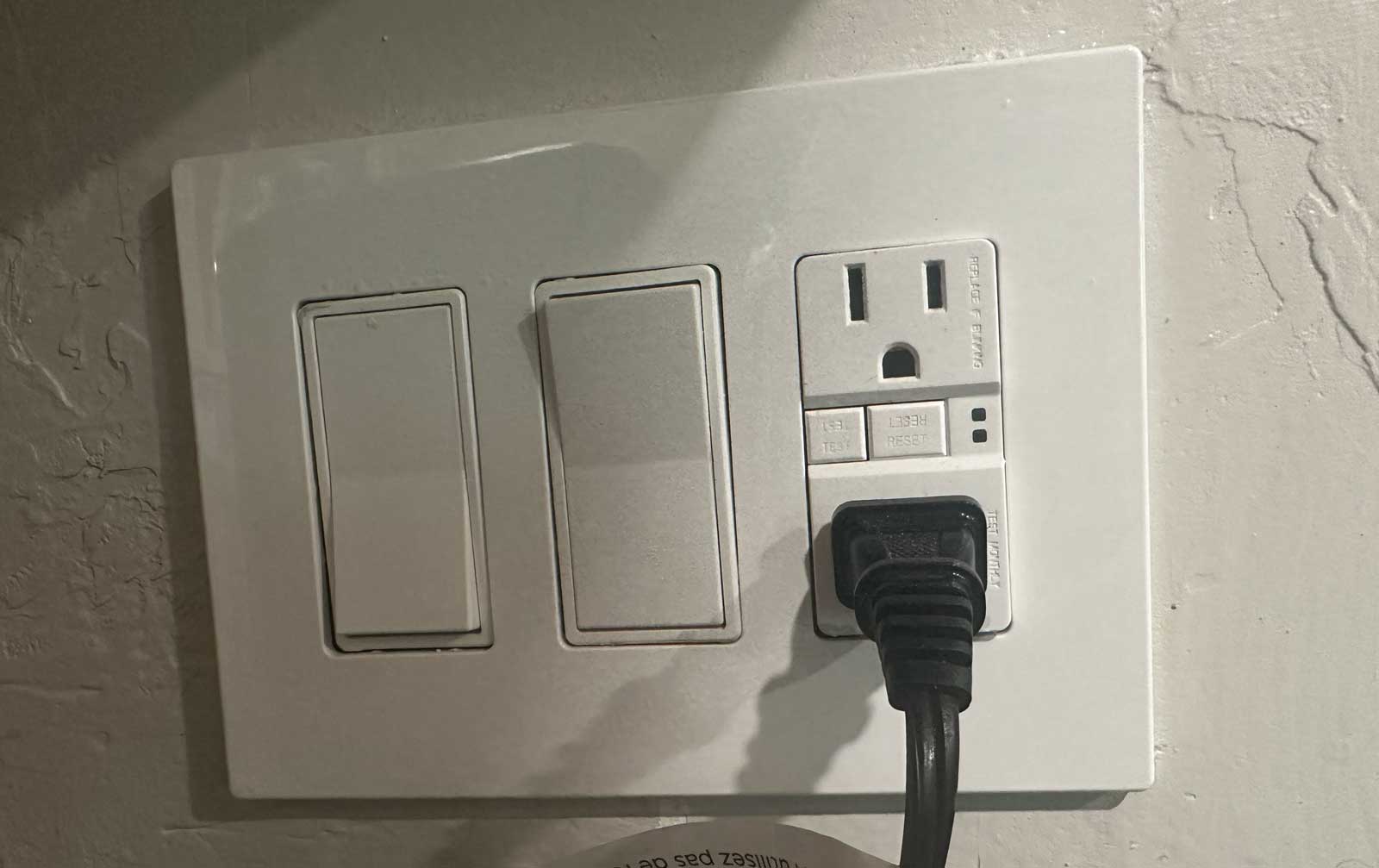
Installation Requirements of GFCI
Did you know that Ground-Fault Circuit Interrupters (GFCIs) can save lives? If you’re wondering how many outlets a GFCI can protect or the necessary installation requirements, then you’re in the right place. In this section, we will cover the key factors to consider when dealing with GFCI installations in compliance with the National Electrical Code (NEC) guidelines.
The NEC is a crucial document by the National Fire Protection Association (NFPA) that establishes electrical safety guidelines for residential, commercial, and industrial buildings in the United States. According to the NEC, GFCIs must be installed in various areas, such as bathrooms, kitchens, garages, and outdoor spaces, where electrical outlets are more likely to contact water and present a risk of electrocution.
So, how many outlets can a GFCI protect? A standard GFCI can protect multiple electrical outlets downstream on the same circuit. However, to ensure protection, it is essential that the load side of the GFCI is correctly wired with the downstream outlets. Always consult a professional electrician for appropriate installations as per the NEC guidelines.
The type of GFCI you choose to install may depend on your specific needs. For instance, a GFCI receptacle can replace a conventional electrical outlet, providing ground-fault protection for any devices plugged into it. On the other hand, GFCI circuit breakers that are installed in the building’s main electrical panel can protect multiple outlets on the same circuit simultaneously.
As a helpful tip, test your GFCIs monthly to ensure that they are functioning correctly. You can do this by pushing the “test” button on a GFCI receptacle, which should cut off power to the connected outlet. To restore power, push the “reset” button. If the GFCI fails the test, contact a licensed electrician to inspect and repair as needed.
In my experience, following proper installation guidelines and adhering to NEC requirements are crucial for ensuring electrical safety in your home or workplace. Installing GFCIs is relatively simple by following the manufacturer’s instructions and can go a long way to protect you and your loved ones from potential ground-fault hazards. Remember, when in doubt, always consult a professional electrician.
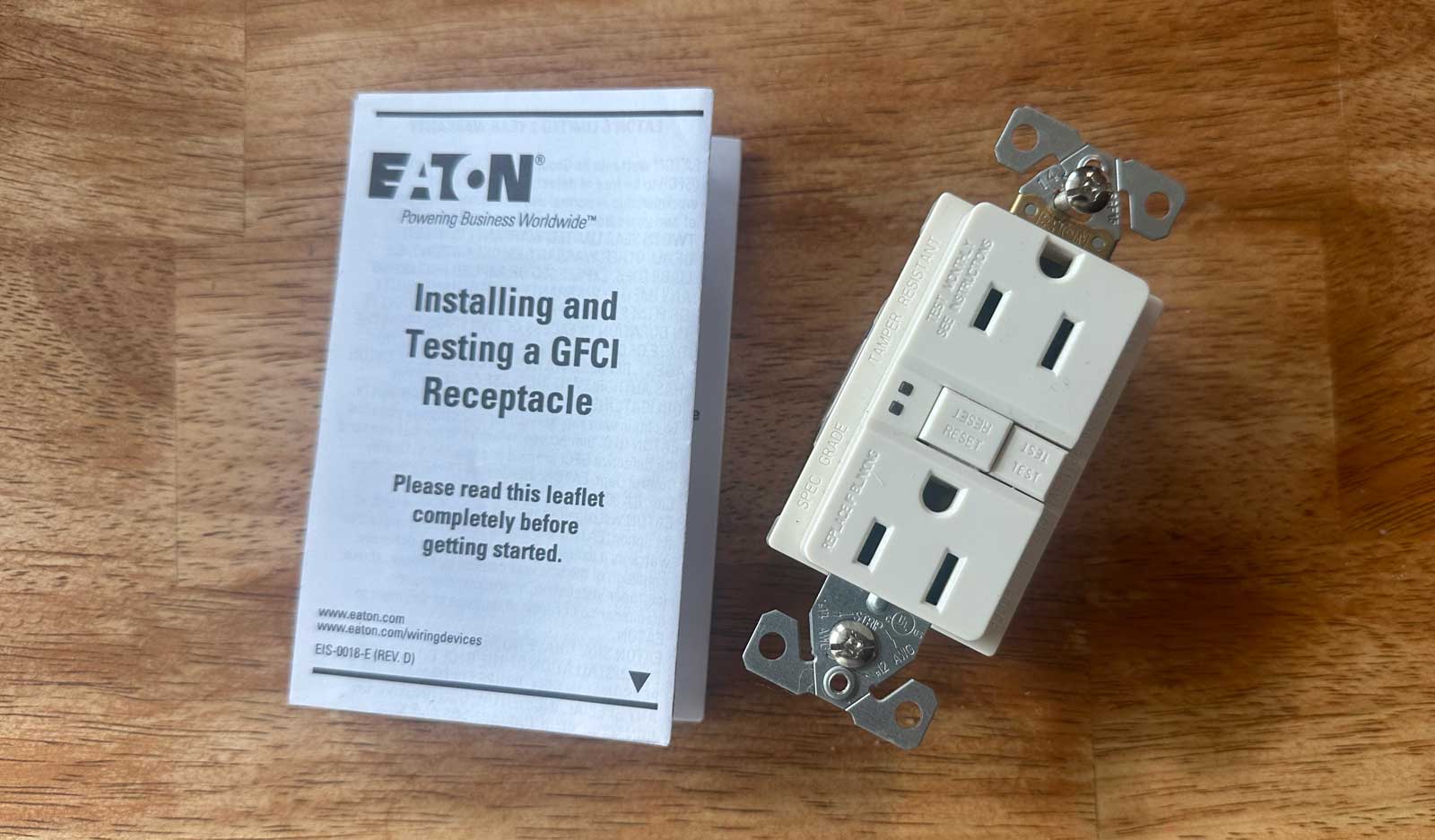
GFCI in Different Areas of A Home
You might be wondering how many outlets a GFCI can protect in various areas of your home. Well, you’re in luck because we’re about to dive into the world of GFCI protection and its applications in different rooms. Let’s get started by exploring where you can use GFCI protection to ensure your safety and compliance with regulations.
In your home, GFCI outlets are crucial to providing electrical safety. They are designed to automatically shut off electric power in areas prone to ground faults, like near water sources. The first area to consider is bathrooms. According to the National Electrical Code (NEC), all bathroom outlets must be GFCI-protected to minimize the risk of electrical shock.
Kitchens are another space where GFCI protection is essential. Outlets serving countertop surfaces, as well as those within six feet of a sink, must be protected. This not only keeps you safe while using electrical appliances but also ensures that your kitchen remains compliant with regulations.
Moving onto laundry rooms, GFCI protection is again a must. Outlets within six feet of laundry, utility, and wet bar sinks need protection to prevent electrical hazards. Additionally, any other outlets in the room should also have GFCI protection for added safety.
In your garage and unfinished basements, GFCI protection is required for all 125-volt, 15 and 20-ampere receptacles. These areas often have damp conditions, making it vital to have GFCI outlets to guard against electrical hazards.
Now, let’s not forget the outdoor areas of your home. All outdoor receptacles must be GFCI-protected to help protect you from potential electrical accidents when using electric tools or equipment outdoors. Similarly, outlets around swimming pools, spas, and hot tubs also need GFCI protection.
While setting up GFCI protection in a multifamily dwelling, it is crucial to ensure compliance with the NEC requirements for all common areas, like hallways, stairways, and recreational facilities.
In my experience, GFCI outlets have significantly enhanced the electrical safety of my home. By understanding and following the NEC regulations for GFCI protection in different areas of your home, you can help ensure a safer living space for you and your family.
Number of Outlets A GFCI Can Protect
You might be wondering how many outlets a GFCI can protect. This is a crucial piece of information for ensuring safety in your home or workplace. But don’t worry, we are here to help you navigate this topic and understand how a GFCI works in relation to multiple outlets.
A Ground-Fault Circuit Interrupter (GFCI) is designed to shut off electric power quickly in the event of a ground fault, often within as little as 1/40 of a second (OSHA). In order to protect multiple outlets in a single-phase branch circuit, a GFCI can be installed either at the beginning of the circuit or within a GFCI circuit breaker at the service panel.
When it comes to the capacity of a GFCI, the main concern is the cumulative effect of all connected devices’ load requirements. The circuit breaker must be able to handle the combined load of all devices connected to the outlets, ensuring that the entire circuit is protected from a potential ground fault.
In general, there is no set limit on the number of outlets that a single GFCI can protect. However, it is essential to consider the devices connected to these outlets and their individual capacity requirements. If the total load exceeds the capabilities of the GFCI circuit breaker, additional GFCIs or dedicated circuits may be necessary.
For example, if you have an office with multiple outlets connected to a single GFCI, it could easily handle several low-power devices such as office equipment and lights. However, connecting high-power devices like power tools or large appliances would require careful consideration to avoid overloading the GFCI and causing it to trip.
In my experience, it’s always better to err on the side of caution. If you’re uncertain about the number of outlets that a GFCI can protect or the load capacity of your devices, it’s never a bad idea to consult with an electrician or a professional in the field.
In summary, a GFCI can protect multiple outlets in a single-phase branch circuit, but the number of outlets depends on the capacity of the circuit breaker and the cumulative load of the connected devices. Keeping safety in mind, always pay attention to the load requirements and consider consulting with an expert if you’re unsure.
GFCI in Other Locations
Protecting yourself from electrical hazards doesn’t end inside your home. There are several other locations where installing a GFCI can ensure safety and prevent electrical incidents. Let’s explore some of these key areas where GFCI protection is necessary.
Unfinished areas and crawl spaces in your house can pose electrical risks due to damp conditions. It’s crucial to install GFCIs in these locations to protect you and your loved ones from potential shocks. Similarly, facilities like locker rooms usually have indoor wet locations, where the presence of water can increase the chances of an electric hazard. Therefore, adding GFCIs in such spaces is crucial for safety.
Outdoor areas around your home, such as eaves of roofs, rooftops, or locations at or below grade, are other spots where GFCIs are needed. These outlets are more exposed to the elements, which can lead to electrical accidents if they’re not protected. Outdoor outlets, particularly in wet locations, should always be equipped with GFCIs to minimize the risk of electrocution or electrical fires.
When it comes to recreational activities, boathouses and boat hoists are not exempt from GFCI requirements. These sites are exposed to water and humidity, making them vulnerable to electrical hazards. Installing GFCIs in these areas is essential for maintaining a safe environment where you can enjoy boating activities without worrying about potential electrical accidents.
In my experience, taking the necessary precautions by installing and maintaining GFCIs in all these locations has provided greater peace of mind. Knowing that you’ve taken the proper steps to ensure electrical safety in all vulnerable areas allows you to focus on enjoying your home and recreational activities with confidence.
GFCI and AFCI Breakers
You’re probably wondering how many outlets can a GFCI protect and what the difference between GFCI and AFCI breakers is. Worry not, this section will provide you with the information you need about these protective devices, without the technical jargon.
GFCI (Ground Fault Circuit Interrupter) breakers are designed to protect you from electrical shocks by detecting ground faults in a circuit and interrupting the flow of electricity. GFCI breakers are a must-have in areas where there’s a risk of water and electricity coming into contact, such as kitchens, bathrooms, and outdoor receptacles (OSHA). On the other hand, AFCI (Arc Fault Circuit Interrupter) breakers are focused on preventing electrical fires by monitoring the circuit for signs of sparking or arcing faults. They are commonly required in bedrooms and living areas.
A single GFCI breaker can protect multiple outlets downstream, depending on the breaker’s capacity. However, it’s essential not to exceed the safe load limits, as doing so might render the protection ineffective. The general rule of thumb is to connect no more than 10 outlets to a single 15-amp GFCI breaker. Nevertheless, it’s wise to consult an electrician to ensure that your setup meets the requirements of your local electrical code.
While GFCI breakers are designed to protect against electrical shocks, they do not offer the same protection level as AFCI breakers against electrical fires. To ensure the highest level of protection for your home, it’s advisable to install both GFCI and AFCI breakers where applicable. These breakers can also be combined into a single device known as a dual-function circuit breaker.
In my experience, incorporating GFCI and AFCI protection in your electrical system is not only a safety measure but also a smart investment. These devices provide peace of mind by reducing the risk of electrical shocks and fires, keeping your loved ones safe. Remember to consult a licensed electrician for proper installation and abide by your local electrical code requirements.
With this knowledge, you’re well-equipped to make informed decisions regarding GFCI and AFCI breakers when designing or upgrading your electrical system. Keep your home and family safe by investing in these invaluable protective devices.
Safety and Maintenance of GFCIs
Do you ever worry about electrical safety in your home? GFCI outlets are here to help. In this section, we’ll discuss the importance of regular testing, ways to spot a damaged cord, and device compatibility with smoke detectors.
One crucial aspect of maintaining electrical safety at home is the regular testing of your GFCI outlets. Most GFCIs have a test button you can press to ensure they function correctly. According to the Occupational Safety and Health Administration (OSHA), GFCI use is mandatory for certain temporary receptacle outlets to protect employees from electrical shock.
However, testing your GFCIs shouldn’t be the only precaution you take. Keep an eye out for signs of damage or wear in cords and wiring. A damaged cord not only poses a risk of electrical shock but increases the likelihood of a ground-fault. Also, make sure to inspect your electrical cords for fraying or exposed wiring. Replace any damaged cords immediately to maintain your safety.
Another essential aspect of electrical safety is ensuring the compatibility of different devices in your home. When it comes to GFCIs and smoke detectors, the two devices should function independently of each other. While GFCIs protect you from electrical shock, smoke detectors detect hazardous levels of smoke and fire.
In my experience, keeping abreast of electrical safety is not a one-time task but an ongoing commitment. So ensure that you regularly test your GFCI outlets, watch for damaged cords, and maintain proper use of all your electrical devices. And remember, a little vigilance goes a long way in keeping you and your family safe from electrical hazards.
Latest Updates and Laws About GFCI
Did you know that GFCI is a literally lifesaver in the electrical world? Curious about what’s new? (1) Let me update you on the latest laws and regulations surrounding GFCI (Ground Fault Circuit Interrupter) outlets.
In recent years, the code surrounding GFCI protection has evolved. The National Electrical Code (NEC) continuously updates its standards for safety and efficiency. As of the 2020 NEC, new requirements for GFCI protection have been added for single-phase receptacles rated 150 volts or less, 50 amperes or less, and three-phase receptacles rated 150 volts or less, 100 amperes or less (2). These rules apply not only to residential settings but also to commercial and industrial installations. Remember, although the NEC provides recommendations, local laws and codes may vary in your area.
GFCI devices are designed to prevent unintentional electric shock by cutting off the power in a fraction of a second when a ground fault occurs (3). In the early years of GFCI implementation, it was primarily meant for temporary use on construction sites and near water sources. However, its effectiveness has led to wider adoption and stricter regulations. In fact, since GFCI introduction, OSHA estimates that between about 650 and 1,100 lives have been saved (4)!
Building codes from the NEC have only grown more comprehensive. For instance, bathrooms, kitchens, laundry areas, and garages are all required to have GFCI-protected outlets (5). Even outdoor receptacles must be GFCI-protected (6). Keep in mind, with technology advancing at a rapid pace, the optimal approach to GFCI protection could change. It’s crucial to stay informed and up-to-date with the National Electrical Code and your local jurisdiction.
In my experience, using GFCI outlets has made a significant difference in overall safety. When you’re dealing with electricity, it pays to be cautious. Remember: always stay informed and follow the most recent guidelines that pertain to GFCI to ensure the well-being of everyone involved.
